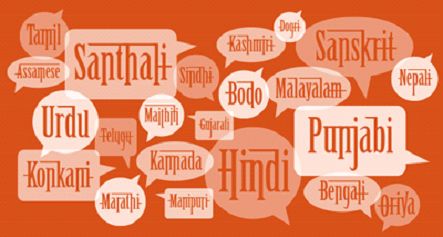By Sarah-Claire Jordan
 India is a country where over 100 major languages are spoken, 23 of which are considered official languages. Over 1500 other languages are spoken there as well. In terms of linguistic diversity, it is comparable to the European Union, especially when you look at the number of official languages rather than the number of languages spoken overall. This means similar issues come up as in the EU, such as translating, in India.
India is a country where over 100 major languages are spoken, 23 of which are considered official languages. Over 1500 other languages are spoken there as well. In terms of linguistic diversity, it is comparable to the European Union, especially when you look at the number of official languages rather than the number of languages spoken overall. This means similar issues come up as in the EU, such as translating, in India.
There are so many languages in India, some of which are used as lingua francas, that it can get confusing for the uninitiated in terms of which language to use for a new marketing campaign or even to make a user interface more accessible. This can present a huge issue for companies who need to get on the localization train and catch up with the rest of the competition. It isn’t even something that is unique to non-Indian companies, however. Many Indian companies still haven’t gotten the memo that providing any content in just English and Hindi means they are only catering to a portion of the consumers they could be catering towards.
Though English is one of the official languages of India and is used as a lingua franca, as with Hindi, that doesn’t mean that it is the best language to focus on if you are thinking of getting the loyalty and respect of the local people. At best, maybe 30% of Indians have a good level of English, and most of them live in the cities. However, the most important cities are slowing down in terms of population growth, so even the tactic of targeting city dwellers might not be the best idea. Yes, English is commonly understood in India, but proficiency is so varied that it is not a good idea to bet on it working.
The situation with Hindi is similar, but not exactly the same, to the English situation in India. In some parts of the country, Hindi is hardly spoken, if at all, so to have, for example, a user interface for an app that would appeal to a good number of Indians available in just English or Hindi is not good marketing or localization. Even though so many companies still believe Hindi to be the most important language in terms of localization in India, this couldn’t be farther from the truth.
The bottom line is, as a business person interested in marketing in India and doing so with a localized campaign or even including localized content, you just have to do your research. Find out what parts of the country your business would do well in, and find out what languages are the most common there. It seems pretty simple, but so many companies are just not getting it, even local companies. Even the ones who are just now getting it have dawdled a little too long and might lose out to the companies that, from the beginning, knew what needed to be done in terms of translating in India.




